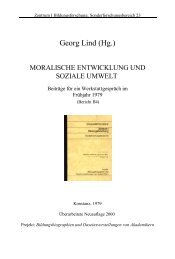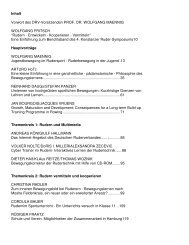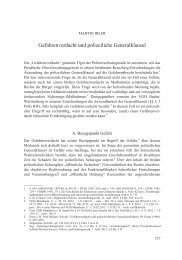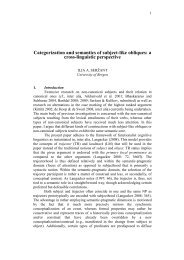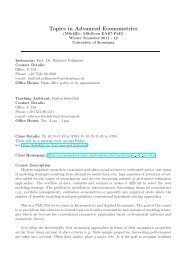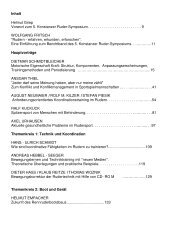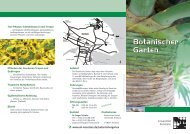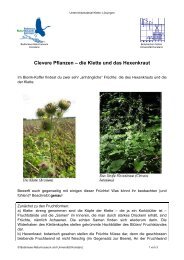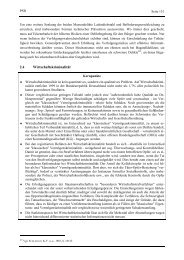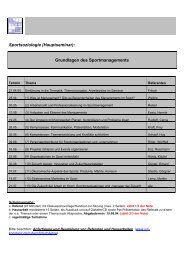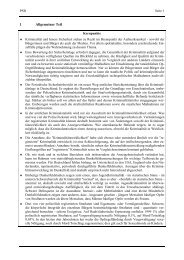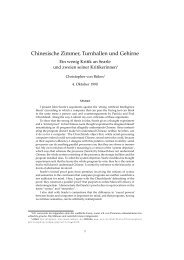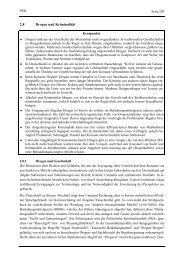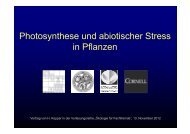Book of Abstracts Book of Abstracts - Universität Konstanz
Book of Abstracts Book of Abstracts - Universität Konstanz
Book of Abstracts Book of Abstracts - Universität Konstanz
You also want an ePaper? Increase the reach of your titles
YUMPU automatically turns print PDFs into web optimized ePapers that Google loves.
A - 10<br />
112<br />
Planar Boron Clusters and 2D to 3D Transitions<br />
Hua-Jin Zhai, 1,2 A. N. Alexandrova, 3 B. Kiran, 1,2 S. Bulusu, 4 Jun Li, 2 Xiao Cheng Zeng, 3<br />
A. I. Boldyrev, 3 and Lai-Sheng Wang 1<br />
1 Department <strong>of</strong> Physics, Washington State University, 2710 University Drive, Richland, WA 99352, USA<br />
and<br />
2 W. R. Wiley Environmental Molecular Sciences Laboratory andChemical Science Division, Pacific<br />
Northwest National Laboratory, P.O. Box 999, Richland, WA 99352, USA.<br />
3 Department <strong>of</strong> Chemistry and Biochemistry, Utah State University, Logan, Utah 84322-0300, USA<br />
4 Department <strong>of</strong> Chemistry and Center for Materials Research and Analysis, University <strong>of</strong> Nebraska-<br />
Lincoln, Lincoln, NE 68588, USA.<br />
One <strong>of</strong> the most interesting features <strong>of</strong> elemental boron and many bimetallic boron<br />
compounds is the occurrence <strong>of</strong> highly symmetric icosahedral clusters. The rich chemistry <strong>of</strong><br />
boron is also dominated by three-dimensional (3D) cage structures. We report our recent<br />
investigations <strong>of</strong> small boron clusters in the size range from 3 to 20 atoms using photoelectron<br />
spectroscopy and ab initio calculations [1-8]. We will present experimental and theoretical<br />
evidence that small boron clusters prefer planar structures and exhibit aromaticity and<br />
antiaromaticity according to the Hückel rules, akin to planar hydrocarbons up to the size <strong>of</strong> 19<br />
atoms. Aromatic boron clusters possess more circular shapes whereas antiaromatic boron<br />
clusters are elongated, analogous to structural distortions <strong>of</strong> antiaromatic hydrocarbons. In a<br />
very recent study [8], we show that 3D structures begin at B20, which has a double ring global<br />
minimum structure. The 2D to 3D structural transition observed at B20 suggests that it may be<br />
considered as the embryo <strong>of</strong> the thinnest single-wall boron nanotubes.<br />
References<br />
B12 B13 B20<br />
[1] H. J. Zhai, L. S. Wang, A. N. Alexandrova, and A. I. Boldyrev, J. Chem. Phys. 117, 7917-7924<br />
(2002).<br />
[2] A. N. Alexandrova, A. I. Boldyrev, H. J. Zhai, L. S. Wang, E. Steiner, and P. W. Fowler, J. Phys.<br />
Chem. A 107, 1359-1369 (2003).<br />
[3] H. J. Zhai, A. N. Alexandrova, K. A. Birch, A. I. Boldyrev, and L. S. Wang, Angew. Chem. Int. Ed.<br />
42, 6004-6008 (2003).<br />
[4] H. J. Zhai, B. Kiran, J. Li, and L. S. Wang, Nature Materials 2, 827-833 (2003).<br />
[5] H. J. Zhai, L. S. Wang, A. N. Alexandrova, A. I. Boldyrev, and V. G. Zakrzewski, J. Phys. Chem.<br />
A 107, 9319-9328 (2003)<br />
[6] A. N. Alexandrova, A. I Boldyrev, H. J. Zhai, and L. S. Wang, J. Phys. Chem. A 108, 3509-3517<br />
(2004).<br />
[7] “Boron Flat Out” (S. K. Ritter), Chem. & Eng. News 82 (9), 28-32 (March 1 (2004).<br />
[8] B. Kiran, S. Bulusu, H. J. Zhai, S. Yoo, X. C. Zeng, and L. S. Wang, Proc. Natl. Acad. Sci. (USA),<br />
in press.



